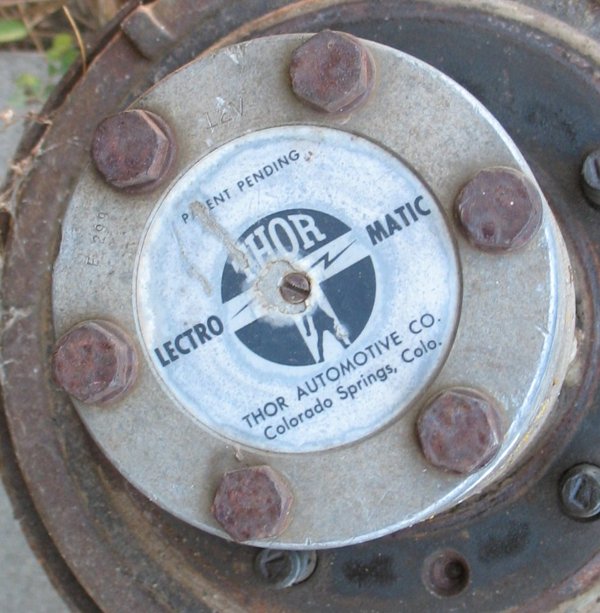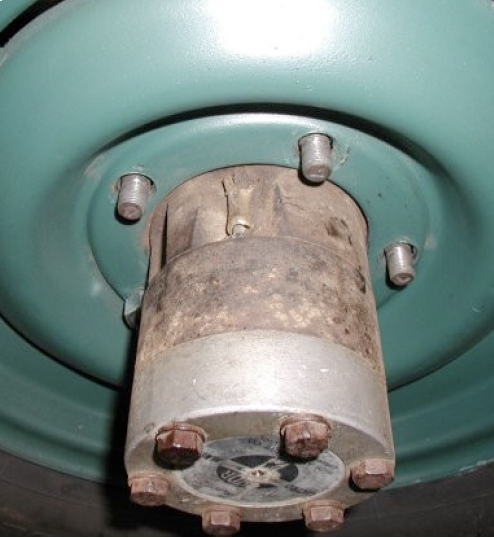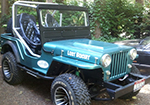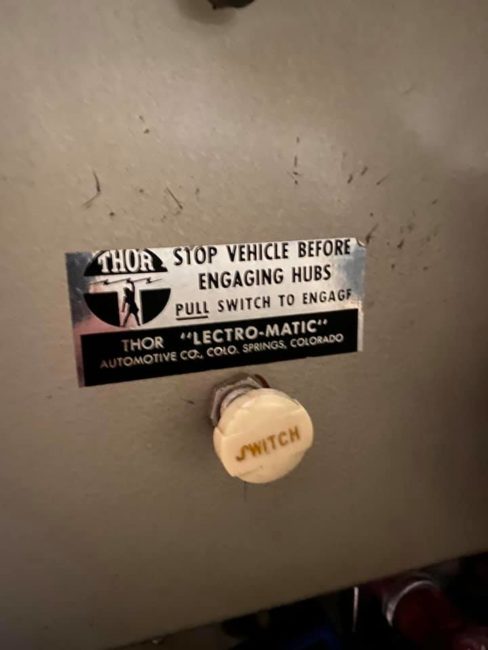UPDATE: I posted this Thor post over a decade ago (how times flies). Below is a look at the switch used to engage the Thor “Lectro-Matic” Hub, which came from this post. Since the below post was first published, there’s also been some history about Thor Products on a shared on another post.
==========================
Originally posted January 2010:
Dan dropped this into my inbox this evening. It’s a detailed look at the Thor “Lectro-Matic” Hub (or lectromatic hub). Dan completed this 18 page document, with disassembling the hubs and discussing each step. You can download the PDF here. Great work Dan!
Dan writes, The Thor “Lectro-Matic” hubs off of my 1955 CJ-5 were a bit of a mystery. These must have been some of the first “push button” 4WD systems to come out. There was little to no information on them so I decided to take them apart and see just how they work. Here is what I have learned.
When my Dad said that they were electric, I assumed that they had a little motor that would “spin” them in or out of engagement. What I realized was that they were more like a solenoid or electromagnet.
There is a coil of wire on the wheel side of the hub. When power is applied to the coil it becomes a magnet and draws itself to the axle side of the hub. There are little “teeth” machined into the facing sides of the hub. These teeth engage and the axle side of the hub turns the wheel or magnet side of the hub. A wire is ran through the back of the backing plate through a hole and provides the electricity to the magnetic coil. A contact mounted on a spring transmits this electric power through a slip ring inside the brake drum to the hub.
I imagine that the hubs could be engaged while the vehicle is moving, but I think this would cause the teeth to slip for a moment and lead to premature wear of the teeth. A toggle switch or a maintained push button could be used to turn the hubs on and off. One could even use a limit switch on the 4WD lever of the transfer case to automatically turn them on when the vehicle was shifted into 4WD. The hubs would only remain engaged as long as power is applied to the magnetic coil. If you left the switch on and had run power directly off of the battery to the switch, it would eventually drain your battery after the engine is shut off. If you ran power from the ignition switch to the on/off switch, your hubs would automatically disengage as soon as you shut off your engine.
If for some reason they didn’t want to work, there was a little screw on the outside face of the hub that you could turn to manually engage or disengage the hubs (as you can see below).

On the top of the hub you can see the wire that passes through the brake drum to power the magnetic coil.



Interesting…Never heard of them either… It seems like a good idea though I don’t think I’d ever run them on my primary 4 wheeling jeep…. 1) I don’t trust myself to remember to turn them off if run directly off the battery and.. 2) The last thing I want to happen if I kill the motor in a hairy spot is for my hubs to unlock because they are on keyed power…
I ran some Warn lock-o-matic’s for a few years but have since swapped them out for regular old Warn hubs… The Lock-o-Matics were ok but were a bear to lock in positively and if you left them in auto mode they would sometimes unlock going downhill because there was no load on them.. Again…Fine for casual use but not hardcore…
I worked for a Company from ’76-’91 “Whitco” who made Jeep accessories. But the company had its start not making Jeep tops but because the founders had made and Patented a locking hub in the late ’50’s or early ‘60’s. As the story goes they sold the patent to Warn Industries because Willys was not interested in buying their hubs but in the home made vinyl top they had put on the Jeep they had driven to Toledo trying to promote the hubs. I know we had boxes of miscellaneous proto type hub parts lying around engineering for a lot of the years I worked there. Don’t remember seeing anything like these but who knows if it was them. Chances of two companies in Colorado Springs designing and trying to sell hubs at the same time would be pretty thin. Warn was one of the board members of the company for a long time. The trade name “Whitco” came from White Manufacturing Company, they made wooden flower stands for displaying flowers at funerals it was later changed to White Automotive Co.
“Worthless History 101”
LOL Dennis .. not worthless history at all. I love those stories!
Here is some info about the tops from the CJ-3B Page: http://cj3b.info/SoftTopHistory2.html.
Apparently, they made bronco tops, too .. http://www.oramagazine.com/pastIssues/1207-issue/index.asp?article=oldiron
And here’s a good thread from the earlyCj-5 page if you are looking for a whitco top.
I always used Warn Lock-O-matic hubs. I have a pair on my 1970 CJ-5 Renogade I bought in 1970. 50 years old and still working. I live in an area of Colorado with 14,000 foot peaks. This Jeep has been over all the trails in this area. Always worked. When I did difficult trails I locked the hubs. Warn sold a repair kit for these which I used once. My son had a 1978 CJ-7 in High School. It has Lock-O-Mactics. The Jeep has been places in Colorado and Arizona I don’t even want to know about. I still have this Jeep and the hubs have never failed. My friend had a Jeep agency in Ranch country. He put Lock-O-Matic’s on all the Jeep Trucks he sold as well as CJ’s and Wagoneers. These trucks were used and abused. However, he did sell regular hubs.
never heard of these either — i’m with ranger bob , warn lock-o-matics are the pinnacle of jeep HUBDOM — i have a N.O.S. set right here waiting to be installed on one of my many 4wd willys , Kaiser JEEPS — the only problem i see with them is they have a lot more little parts to install , makes it harder to service the wheel bearings , etc ..